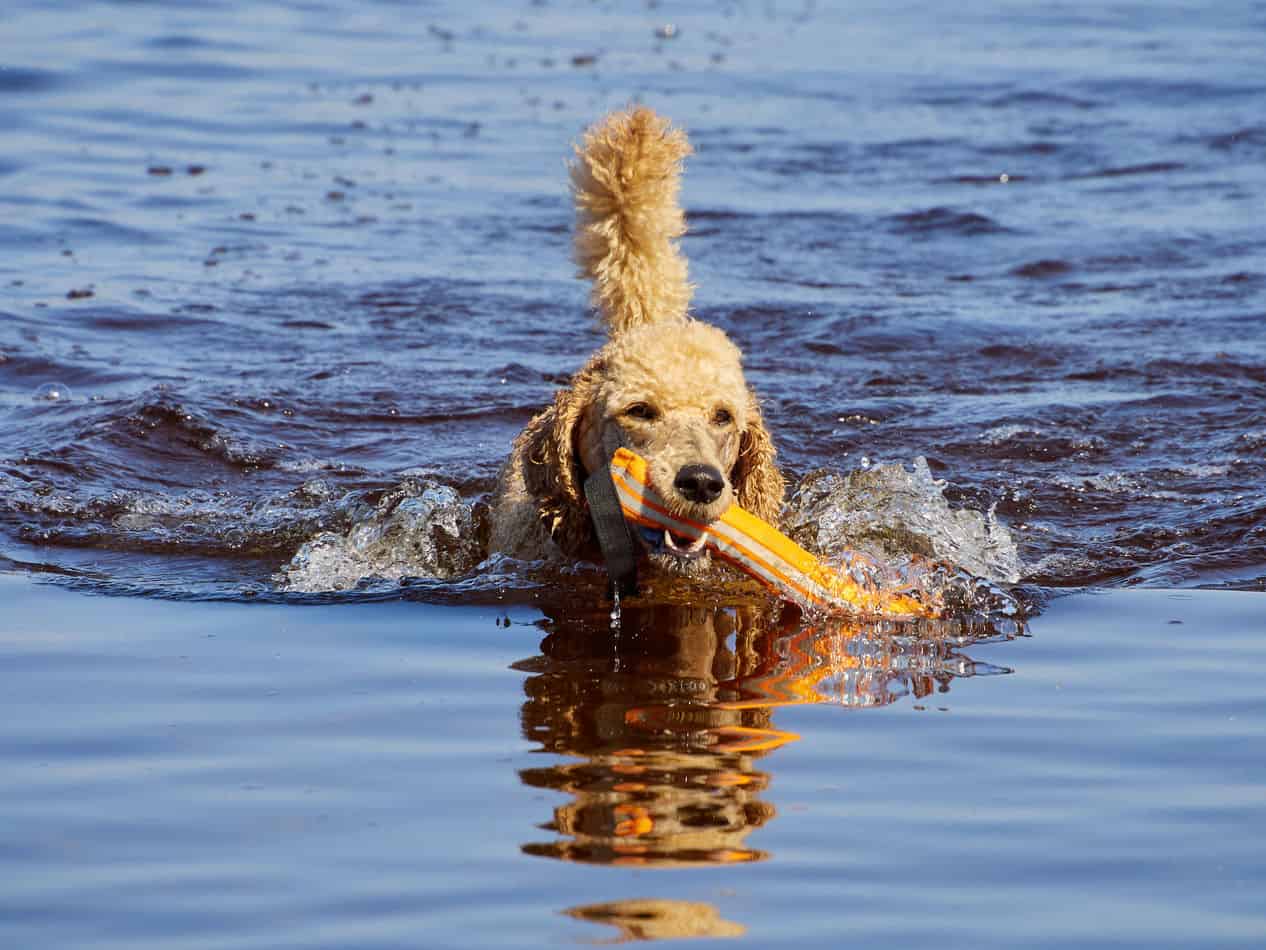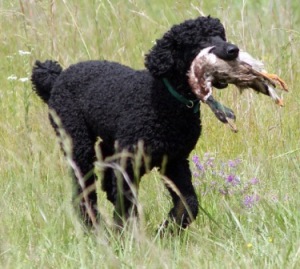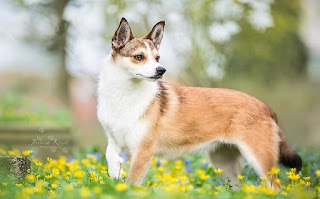Breed Highlights
Thursday, February 4, 2021
The Leonberger
The Siberian Husky
Monday, January 25, 2021
The Pug
The Pug’s motto is the Latin phrase “multum in parvo” (a lot in a little)—an apt description of this small but muscular breed. They come in three colors: silver or apricot-fawn with a black face mask, or all black.
The large round head, the big, sparkling eyes, and the wrinkled brow give Pugs a range of human-like expressions—surprise, happiness, curiosity—that have delighted owners for centuries.
Pug owners say their breed is the ideal house dog. Pugs are happy in the city or country, with kids or old folks, as an only pet or in a pack.
They enjoy their food, and care must be taken to keep them trim. They do best in moderate climates—not too hot, not too cold—but, with proper care, Pugs can be their adorable selves anywhere.
Source: akc.org
Monday, January 18, 2021
The Lagotto Romagnolo
Wednesday, December 30, 2020
The Cirneco dell’Etna
Cirneco is derived from a Greek word meaning “dog of Cyrene (Libya).” It is likely that the breed has existed in Sicily since its ancestors arrived on its craggy shores some 3,000 years ago in the holds of ships piloted by those master traders of the ancient world, the Phoenicians. As far back as 500 b.c., dogs resembling Cirnechi appeared on Sicilian coins. -AKC.org
Etna is the name of a mountain in Italy.
Their short sleek coats make for easy maintenance and their moderate energy requirements make them pretty easy keepers. Overall, these dogs make great companions for people who live an active lifestyle or want to be competitive in the world of dog sports.
The Yorkshire Terrier
This breed makes for a great apartment dog and is a favorite among many city-dwellers. With a unique personality and tons of character, they will definitely enrich your life and provide lots of love and laughter.
Tuesday, December 1, 2020
The Pumi

Their coats require minimal maintenance. A weekly brushing will remove loose hair and prevent matting. Once you finish brushing, you wet the coat with water and allow it to air dry to restore the corkscrew curls.
These dogs are working dogs and have very high exercise requirements. According to one website, they would do best as an outside dog on a farm where they can come up with their own jobs like protect the front gate or guard the livestock. They also excel in sports like agility. They are not recommended as apartment dogs or even house dogs. They have been known to climb and dig when bored so a backyard might not be able to contain them.
Sources:
vetstreet.com
akc.org
dogbreedinfo.com
The Pomeranian
Overall, these dogs make for great apartment dogs due to their petite stature and relatively low energy requirements. They are loving and loyal and will make a great watchdog while you're not home. Their strong personalities can sometimes lead them to believe that they are in charge of the house, instead of you, so you'll have to make sure to set firm boundaries with this breed or you'll find yourself very well-trained by your dog.
Monday, October 26, 2020
The Cesky Terrier
This breed comes from Czechoslovakia and was single-handedly created by one person! František Horák founded the breed in 1948. His aim was to make a dog that could hunt underground like a terrier, hunt in a pack like a hound, and be friendly and loyal at home like a retriever and thus, the Cesky Terrier was born. It is one of the 6 rarest dog breeds in the world and only 600 individuals live in the United States according to the AKC.
Monday, September 28, 2020
The Beagle



Tuesday, September 8, 2020
The Sloughi

Described as elegant and reserved, the sloughi (pronounced SLOO-ghee) is a sighthound that originated in the North African desert. They were bred to hunt a variety of prey including hare, fox, jackal, gazelle, and wild pigs. They are known for being aloof with strangers but gentle to their families. They can make good family dogs, but may not do well with very young children.

They are a very active breed with high exercise requirements. If you lead a very active lifestyle, you just might be able to keep up with these incredibly athletic dogs. Combined with their stubbornness that makes them hard to train, they don't typically make a great dog for first-time dog owners.

Their coats are sleek and short and requires very little maintenance. They don't shed much and don't typically drool a lot. They weigh approximately 50 lbs. on average and stand around 24-29 inches tall.
The Poodle

Ranked as the second most intelligent dog breed, poodles are amazing dogs with a lot to offer!
They come in 3 sizes, though unlike other breeds, they are all still considered the same breed. The standard poodle is the largest and can weigh upwards of 50 lbs. The miniature poodle weighs in at about 10-15 lbs. and the toy poodle is a very tiny 4-6 lbs.
The poodle is commonly thought of as a snobby or a sissy dog, but that is very far from the truth. These dogs are incredibly athletic and thrive in sports like agility and hunting trials. Their intelligence and eagerness to learn make these dogs incredibly easy to train, but watch out because they can learn bad behaviors just as quickly as the good ones. You might be surprised by how quickly they can work things out for themselves, especially if it involves stealing a snack or two! If you're new to dog ownership, you'll definitely want to get enrolled in obedience classes as early as possible, regardless of what size poodle you have, or you could very quickly end up with a pup who runs your house like they own it.
As the second most intelligent breed, poodles are unique in that they generally lack the tendency towards neuroticism that the other highly intelligent breeds possess. This trait makes them a better choice for first-time dog owners because they are less likely to develop unwanted behaviors that can sometimes become dangerous.

Poodles are considered one of the hypoallergenic breeds. They tend to produce less dander and shed less than other breeds which makes them a popular choice among people with dog allergies. Their coat does require a lot of upkeep, however. Their fur grows continuously and they need to be thoroughly brushed every day with a trip to the groomers every 4-6 weeks. Some owners learn how to do their own grooming which can save you money but can be a lot of work if you are just learning. No matter which route you take, be prepared for lots of grooming at home. Even if they are trimmed short, their fur will mat if you don't brush them regularly which can cause sores and skin infections.
 .
. 
These dogs are very active breeds that require regular exercise. Playing fetch or going for a long walk are great ways to get some of that energy out. Most people are surprised to learn that they also love swimming and were originally bred for duck retrieval.
Poodles make excellent family dogs. They are very social and thrive with a lot of attention from every member of the family, including children. Be careful with small children around toy poodles, however, because they are the most delicate and can be injured easily.
Overall, poodles are incredible dogs with a lot to offer. They are intelligent and easy to train which is a great way to bond with them. Outgoing and social, these dogs make excellent family pets and thrive on attention. From beginners to more experienced dog owners, poodles are a great fit for everyone.
Sources:
Thursday, August 20, 2020
The Norwegian Lundehund
The Norwegian Lundehund is a truly rare and unique dog. These dogs were originally bred to hunt puffins on the islands off the west coast of Norway and they very nearly went extinct after puffins became a protected species.
There are some very unique physical characteristics that this dog possesses which could possibly link it back to more primitive dogs. For example, these dogs have 6 functional toes. Four of them point forward, and two point inward, like human thumbs. These extra digits help with traction in rocky terrain and make it easier to dig for puffin nests. They can also close their ear canals to prevent dirt and water from getting in their ears, especially in small tunnels. They can also bend their neck so far back that they can touch the top of their heads to their backs. This allows them to turn around in very narrow spaces. They also have incredibly flexible shoulder joints and they can spread their front legs directly out to the side. This also helps them with climbing.
The temperament of these dogs is also unique. They are generally happy and playful dogs but are also hypervigilant and will sound the alarm at the slightest disturbance. They require frequent socialization from a young age in order to be more confident around strangers. They are very intelligent but very challenging to train. They are very clever and will often identify their own goals and work towards accomplishing them. They are very good at problem solving and have no problem overcoming any obstacle that gets between them and their goal. According to one source: “Confinement to a crate or back yard is just one more obstacle to overcome. And if they outsmart you once, they remember.”(1)
Housebreaking can also be a major challenge and some dogs never actually master it. Their yards should be surrounded by a very high fence as these dogs are excellent at jumping and climbing.
This breed of dog is on the smaller side, about 13 inches at the shoulder, and weigh between 20 and 30 lbs. They can be expected to live between 12 and 15 years. They have a short, slick coat that is easy to groom and they all have the same signature color pattern. They are graceful and agile, making them great climbers and jumpers.
Overall, this breed is not for everyone. They will need a lot of time and commitment on the owners behalf in order to make sure their needs are met. It may also be helpful to have a strong sense of humor as these dogs will always be looking for ways to get what they want, which will likely end up in some pretty creative ways of getting into trouble. For those who choose to own this breed, they will get a lifetime of loyalty and an excellent adventure partner.
Source:



































